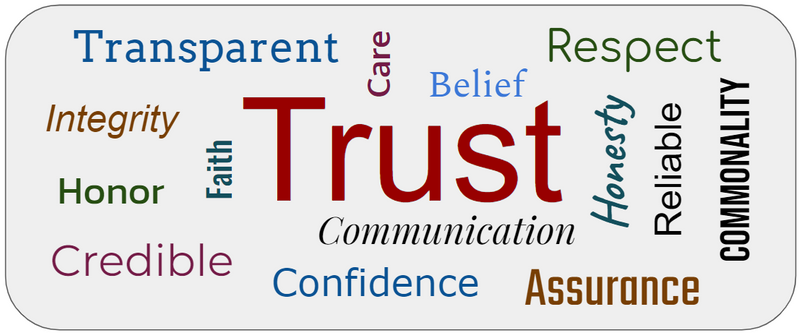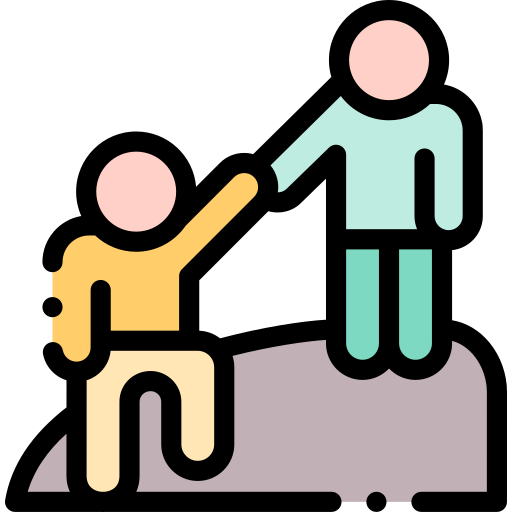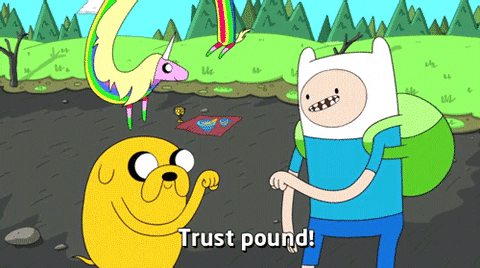
Do you want to work on a high-performing team where team members support and respect each other?
There are a lot of things that go into making that particular magic happen, but one key ingredient is always TRUST — especially in virtual work environments.
When remote coworkers trust you, you develop better working relationships and work better together, which can have a big impact on both business success and how you feel getting out of bed every day.
What does trust in a workplace look like?

Trust in the workplace can take on many forms.
Think about that group project you did in high school. If you got to choose groups, you'd choose people you trusted — people you thought you could count on. Odds are, the people you wanted in your group fit at least one of the following types:
The Valedictorian — "I trust that you know what you're talking about."
The Over-Achiever — "I trust you'll do what you say you'll do...and then some!"
The Friend — "I know you...and well, the devil you know..."
Just like high school, trust in the workplace evolves from a similar place.
What's the need for trust on a remote team?

With more people working from home on remote teams, building trust is more important than ever.
When not physically together, your whole team needs to be able to have confidence that team members will follow through without direct supervision.
Working in different time zones can make live connections and maintaining work/life boundaries a challenge.
Team members may not have met face to face, so relationships may not be established
So how can YOU start building trust on your virtual team today? Here are 5 ideas to get you started.
Did you know?
Rumie is a nonprofit community dedicated to making innovative learning free for everyone.
1. Communicate, communicate, communicate!
Keep your team — and any other relevant stakeholders — updated on what you're up to, rather than saving up for a grand reveal at the finish line.
Share status updates, task blockers, setbacks, and accomplishments to build familiarity and confidence. Don't expect your coworkers to be mind readers — communicate early, and communicate often!
2. Set yourself up for success...then deliver.
Captain Obvious here! If you say you’ll do something…do it!
Ok, that may seem like a waste of words...but there's more to it than meets the eye. So the next time a team member asks you to do something — before you jump to "Yes!" — ask yourself: Can I realistically follow through? Do I have the time and necessary knowledge or skill?
If you're not 100% sure, set yourself up for success by first setting clear expectations that you CAN meet. Make it a game you can win!

3. Get to know your team.
Remember that friend you invited to your group project in high school? Let's face it, for better of worse, familiarity breeds trust. One way to accelerate your trust building — and, have some fun! — is to get to know your team members on a more personal level.
For example:
Use your video on calls if possible. Seeing facial expressions helps us better understand the reactions and feelings of others. Plus, psychologically, looking at each other actually makes us treat each other more nicely!
Weave icebreakers into your everyday meetings. For example, don't just dive right into business. Take advantage of the first 5 minutes to learn something new about each other.
Organize or attend connectivity events. These can be great opportunities to build relationships and better understand our teammates’ personalities, which helps boost trust, camaraderie, and productivity.

4. Own your mistakes.
Mistakes happen to everyone. When they do, don’t hide it and don’t deflect responsibility. Admit what went wrong, and offer solutions.
Admitting when you made a mistake and demonstrating your commitment to fixing it shows integrity, which is a key building block of trust.

5. Pitch in
If you notice a coworker needs help with something, or has too much on their plate, offer to help. Big or small, when you show someone you care, you help build trust.

Take Action

Start building trust on your team today!
This Byte has been authored by
Anne Marie Rego
Director, Trust Solutions Innovation & Technology
Chuck Papandrea
Process Innovation and Peak Performance Consultant
Hayley Lynch
Senior Associate
Susie Ruppel
Senior Associate